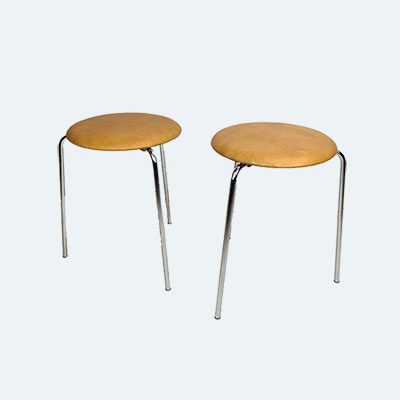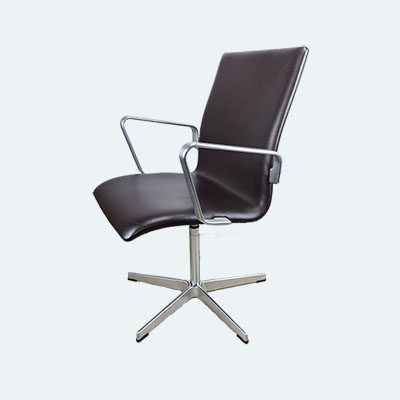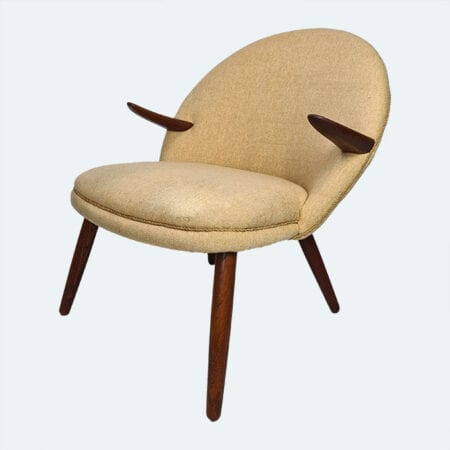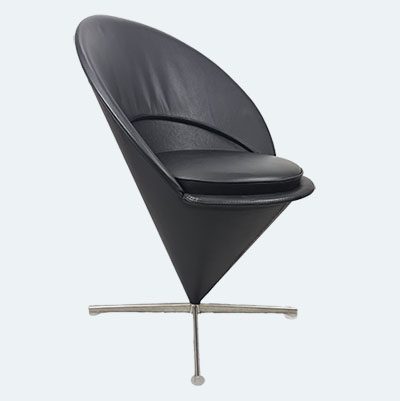Design story
Johannes Andersen Dining Chairs Model 101 are designed in the 1950s for Vamo Sønderborg. These chairs have frames made from teak and cognac-coloured aniline leather seat cushions. They feature a beautifully designed double bow-tie style backrest that are deeply curved for support. The chairs are clearly marked with the manufacturer’s stamp on the underside.
As with all Andersen’s furniture, these dining chairs are well balanced both physically and visually. The background in craftsmanship he is known for, becomes evident in both shape and quality. These chairs would make a great addition to any modern dining environment.
Vamo manufactured designs for Johannes Andersen, Arne Vodder and Ib Kofod-Larsen to name a few.
Johannes Andersen is a Danish designer from the 20th Century and internationally recognised for his organic work.
Andersen was born in Aarhus, Denmark in 1903. He started his career with an apprenticeship in cabinetry and became certified in 1922. After graduating, he worked for a few different workshops. In the mid-1930s, he founded his own architectural workshop. This was at a time when Danish modern design rose in popularity, which meant he could take advantage of the consumption boom from the 50s and 60s: Danish people wanted to buy more and more furniture.
During his career, Andersen produced many pieces of furniture, with his most famous probably being the iconic Capri series and the Smile Coffee Table. The Smile is a result of years of experimentation with various shapes and forms as Andersen always did when working with wood. The Capri coffee table is another example of curved surfaces and bevelled edges that softened the design, showcasing the more organic approach to shape and form for which Danish designers, in particular, were known.
With the rise of Danish furniture becoming internationally recognised he began collaborating with many Norwegian and Swedish manufacturers and he soon became a reputable component in Danish Design.










